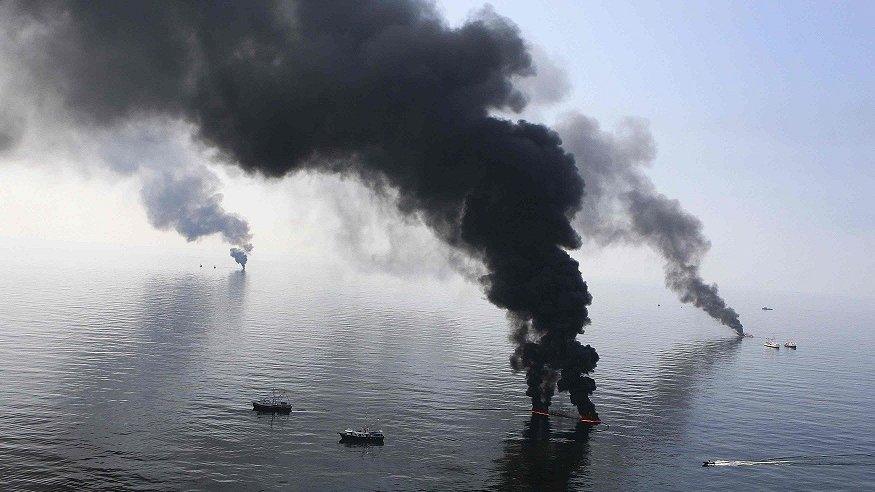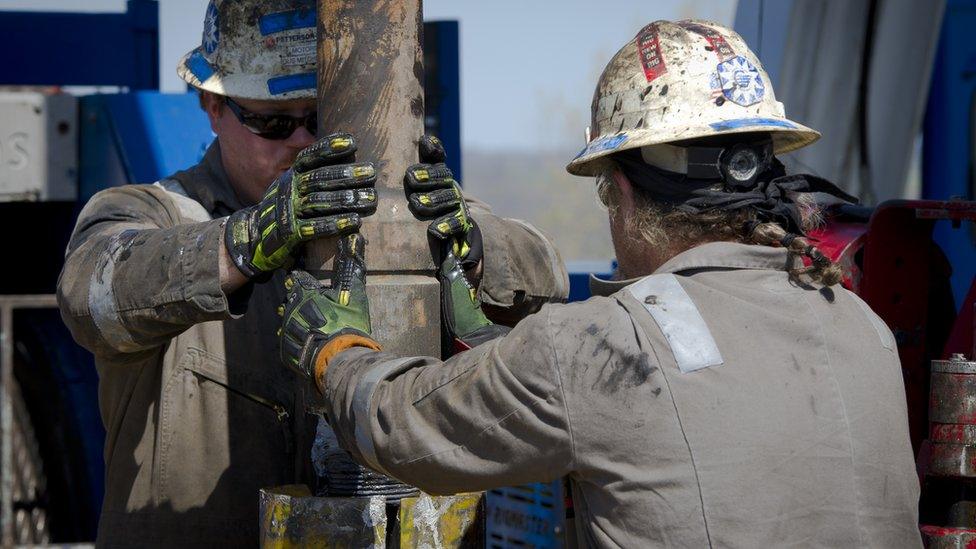Mounting oil stockpiles set to keep prices lower
- Published

Crude and oil product storage terminals are filling up
A large and growing global glut of crude is set to keep oil prices at their depressed levels in the coming months.
Brent crude has fallen from above $115 per barrel in June 2014 to about $45 a barrel now.
High stockpiles of refined oil products - petrol and diesel - as well as crude oil mean that unless there is substantial disruption to production or soaring demand, any recovery looks to be a long way off.
Over the winter refiners ramped up their operations to keep the flow of fuel running through their system at near maximum capacity as they benefited from the lower oil price.
Prices for petrol and diesel did not initially fall as far as the price of crude, giving the refiners bigger profits for each barrel of oil they produced.
However, partly because of the mounting glut, margins have since slumped and refiners and traders are left with huge stockpiles of oil on their hands and there's not enough demand from consumers.
In the oil storage hubs of Amsterdam, Rotterdam and Antwerp that serve northern Europe, petrol in independent storage is up more than 17% from a year ago, near its record at 1.16 million tonnes, according to industry consultant PJK International.
In the US, distillate stocks (diesel and jet fuel) were more than a third above the five-year seasonal average in July, while gasoline stockpiles were also well above the norm, the Energy Information Administration, external said.

Oil tankers laden with oil and refined fuel are used as storage venues
There's so much unwanted crude oil, petrol and diesel that tanks are nearly at full capacity and traders are forced to store it on tankers that languish at sea. Some traders deliberately send cargoes of jet fuel from Asia to Europe around the Horn of Africa rather than the quicker, more direct route through the Suez Canal because they cannot find a home for it.
Low freight costs mean that it is relatively cheap for traders and oil companies to let oil and petrol sit on ships in the expectation that they will get a higher price in future months.
Added capacity
Olivier Jakob, analyst at Petromatrix in Zug, Switzerland, said that millions of barrels of storage capacity have been added to the existing capacity in recent years.
Refiners, pounded by slumping profits, shut their doors and turned their plants into storage facilities, while Asian governments have aggressively built up their stockpiles to ensure security of supply.
"Tank farms are being built where refineries have been shut down, and China and India have bought oil for their SPRs [strategic petroleum reserves]," he said, adding that there has been a lot of additional capacity added in the Middle East and Singapore.
"It's contributing to market stabilisation, it will keep prices low," Mr Jakob said.
The Chinese government has even started building underground caverns, external to store its oil, which it hopes will hold 130 million barrels of the 550 million-barrel SPR target set by Beijing for 2020, according to Reuters.

The number of shale rigs is on the rise again helping limit fall in US output
It was a surge in oil production from shale oil producers in the US that prompted prices to collapse and it is this oil that pushed up stockpiles in the world's biggest oil consumer to record highs earlier this year.
This slump had led to a fall in the number of shale rigs as it became less profitable to produce the oil, causing predictions of a large fall in US production.
But July saw the biggest number of new rigs since April 2014, meaning that the slippage in production won't be as great as initially thought - another factor that will help keep tanks full and prices in check.
- Published31 July 2016
- Published26 July 2016

- Published29 July 2016
